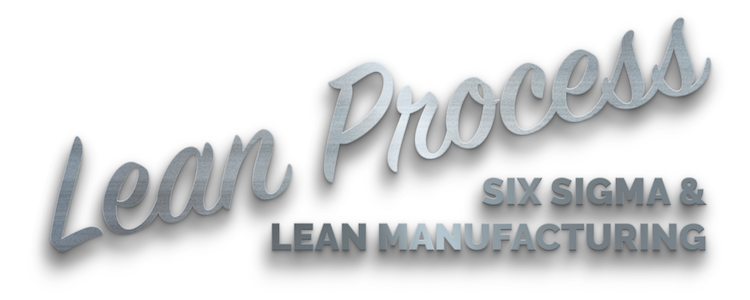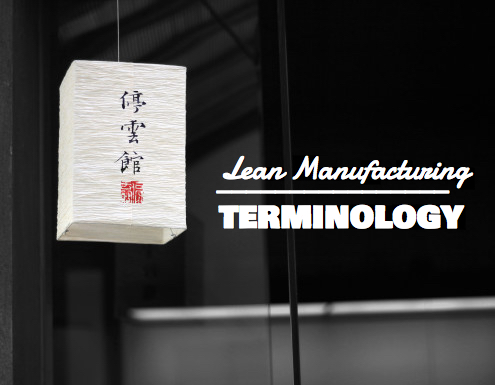What are Lean Manufacturing Tools?
Many of the lean manufacturing tools have increased in popularity as a result of the recent growth in lean deployments in both manufacturing and transactional environments. Like many other business process improvement methodologies, lean manufacturing has a wide range of tools associated with it. Some of them are more conceptual: guiding principles if you will, whereas others are tangible devices that support lean production.
The following post will explore a number of the popular lean manufacturing tools and explain the basic premise. This is not intended to be an exhaustive review. Think of it more as a glossary – use it to see which tools and techniques fit your particular need and then explore those topics further. Over time we will be adding links from this page to more detailed explorations of each of the subjects.
Enter the Lean Manufacturing Tools
- Pull Replenishment
- Continuous Flow
- Standardised Work
- Heijunka
- 5S
- Five Whys
- Overall Equipment Effectiveness (OEE)
- Value Stream Mapping
Pull Replenishment
Pull replenishment is a method of production control that aims to reduce the waste of overproduction. The aim of a pull system is to deliver the correct quantity of material, only when the downstream activity signals that it is ready to receive it. This applies to both internal material replenishment between a stores area and an assembly line, and to extended value streams between suppliers, manufacturers and customers. By only producing what is consumed by the customer, pull replenishment prevents inventory accumulation between processes. This is in contrast to a more traditional push strategy that controls production based on a forecast, where build ups of stock and work in progress are common.
Continuous Flow
This refers to a state in which material and information moves seamlessly from one activity to the next. It is also sometimes referred to as one piece flow. In order to achieve continuous flow, all elements within a process need to operate efficiently and be balanced. If there is an activity in the process where the cycle time is significantly longer than for the preceding activities, a bottleneck will be created. Inventory will accumulate before this activity and it will soon become overburdened. Creating continuous flow then is about balancing the cycle times of the process to match the pacemaker activity. This should then also be matched to the Takt time – the rate of customer demand. Where continuous flow is not possible, an inventory buffer called a supermarket is often used. This can be useful where two processes are geographically isolated for instance.
Standardised Work
Today’s standardization… is the necessary foundation on which tomorrow’s improvements will be based. If you think of ‘standardization’ as the best you can do today, but which is to be improved tomorrow – you get somewhere. But if you think of standards as confining, then progress stops.
~ Henry Ford
Standard work is a lean manufacturing tool that is used to define and document the best known method of performing an activity. By performing a task in the same manner repeatedly, variation can be reduced leading to consistent quality for the customer. The standard work document explains all the elements that must be carried out in order to complete the task. It also documents the sequence in which they should be carried out, how long each element should take, any key points to watch out for and which tools should be used. The intent is that the task should be performed consistently regardless of who conducts it. By making the standard clear, it becomes easy to spot when an abnormal condition has occurred and therefore much easier to rectify. The standard work however is only the best current method for doing a job. If an operator discovers a more efficient, consistent or safer method to complete a task, then that becomes the new standard. This can then be taught to other operators so that everybody benefits from the new standard.
…Highly productive efficiency has been maintained by preventing the recurrence of defective products, operational mistakes, and accidents, and by incorporating workers’ ideas. All of this is possible because of the inconspicuous standard work sheet.
~ Taiichi Ohno
Heijunka
“Heijunka” is a Japanese term that means levelling the load. By studying the variation in customer demand it is not uncommon to find that volume varies from one day to the next. The mix of product may also be inconsistent. This is typical of batch production where one part is run for a period and then switched over to another. Heijunka seeks to level the variation by creating small but frequent withdrawals. This can be measured by the EPEx metric which monitors how often every part is produced e.g. every part every week, every part every day. These smaller, more regular withdrawals can insulate the manufacturing process, by moving the variation to the end of the process as finished goods inventory. The production process then replenishes the finished goods supermarket as consistently as possible, while the buffer level in the supermarket absorbs the variation in actual customer demand.
5S
5S is a discipline used in lean manufacturing to improve the workplace. The term 5S refers to the five stages, which all begin with the letter S:
- Sort
- Set
- Shine
- Standardise
- Sustain
Thorough 5S ensures that everything has a place, and that everything is in it’s place. It makes it easy to spot out of standard conditions such as oil leaks on a machine, or a missing tool for instance
Another associated term used with 5S is red tagging. This is a process where labels or tags are applied to items that are no longer required in an area. This happens during the Sort phase of 5S.
Five Whys
The five whys is a questioning technique used to find the root cause of a problem. When the problem is stated, the question “Why?” is asked a minimum of five times to try and drill down past the symptoms of the problem to the underlying issue. The root cause is the one that, if addressed, will prevent the problem recurring. Five whys is often used during a PDCA lean process.
OEE - Overall Equipment Effectiveness
Overall Equipment Effectiveness, or OEE, is a measure used to evaluate the losses in a production process. It gives an indication of the utilisation of a manufacturing operation.
How to calculate OEE
OEE is calculated by multiplying three factors together. The three factors that are used in the OEE calculation are:
- Availability
- Performance
- Quality
The OEE calculation then is shown below:
OEE = Availability x Performance x Quality
Availability
Availability is a measure of downtime in a process. The numerator for availability is the actual time spent running the process. The denominator for availability is the scheduled time that the process should run. Dividing the numerator by the denominator gives a percentage of uptime for the process. If no downtime has occurred then the actual time and scheduled time are the same. Dividing one by the other in this case, gives an availability of 1 or 100%.
If the actual time is less than the scheduled time then availability will be less than 100%. Reasons for availability to be less than 100% include:
- Machine breakdown
- Startup losses
- Tooling changeovers
- Material Unavailable
- Operator Unavailable
Performance
Performance is a measure of speed in the process. The numerator for performance is the number of actual units produced by the process. The denominator for performance is the number of units expected based on the actual time that the process ran. Dividing the numerator by the denominator gives a percentage of production against the designed production rate. If the process has run according to the cycle time in the standard work, then the actual units and expected units will be the same. Dividing one by the other in this case, gives a performance of 1 or 100%.
If the cycle time is not adhered to and fewer units are produced than expected, the performance will be less than 100%. Conversely, if more units are produced than expected, the performance will be greater than 100%. However, the latter would indicate that the cycle times used to determine the expected units are incorrect and need to be reviewed and updated.
Quality
Quality is a measure of the precision in a process. The numerator for quality is the number of good units produced according to the design of the product. The denominator for quality is the total number of units produced. Dividing the numerator by the denominator gives a percentage of acceptable units for the process. If no defects have been produced, then the good units and total units will be the same. Dividing one by the other in this case, gives a quality of 1 or 100%.
If the number of good units is less than the total number produced, then quality will be less than 100%. Reasons for quality to be less than 100% include:
- Damage or scrap
- Contamination
- Loose or overtightened parts (Torque)
- Leaks
- Missing parts or components
- Incorrect components fitted
OEE - Overall Equipment Effectiveness
Value Stream Mapping (VSM)
This is a simple, graphical representation of the process, suppliers and customers involved in a value stream. Usually, a current state map is created first by walking the process. The author captures the material flows and also the information flows. They also record any wastes that they observe, such as overproduction or excess inventory. A future state value stream map is then created showing how the material and information should flow if all the issues identified in the current state get fixed. It is recommended that value stream maps are hand drawn in pencil to avoid over complicating them.
photo credit: chuckoutrearseats via photopin cc








